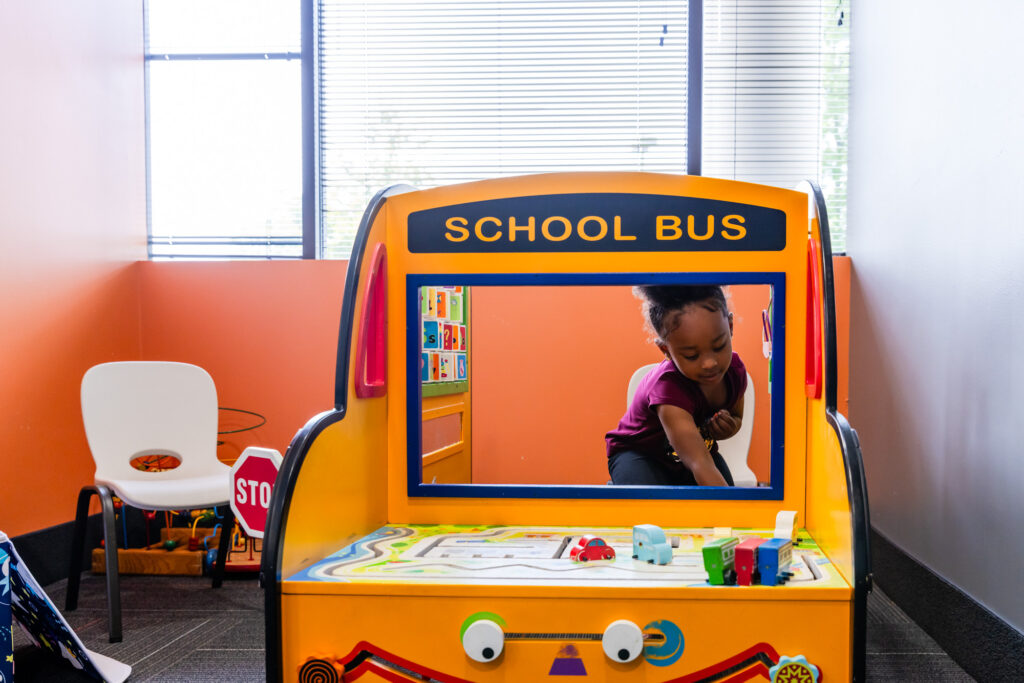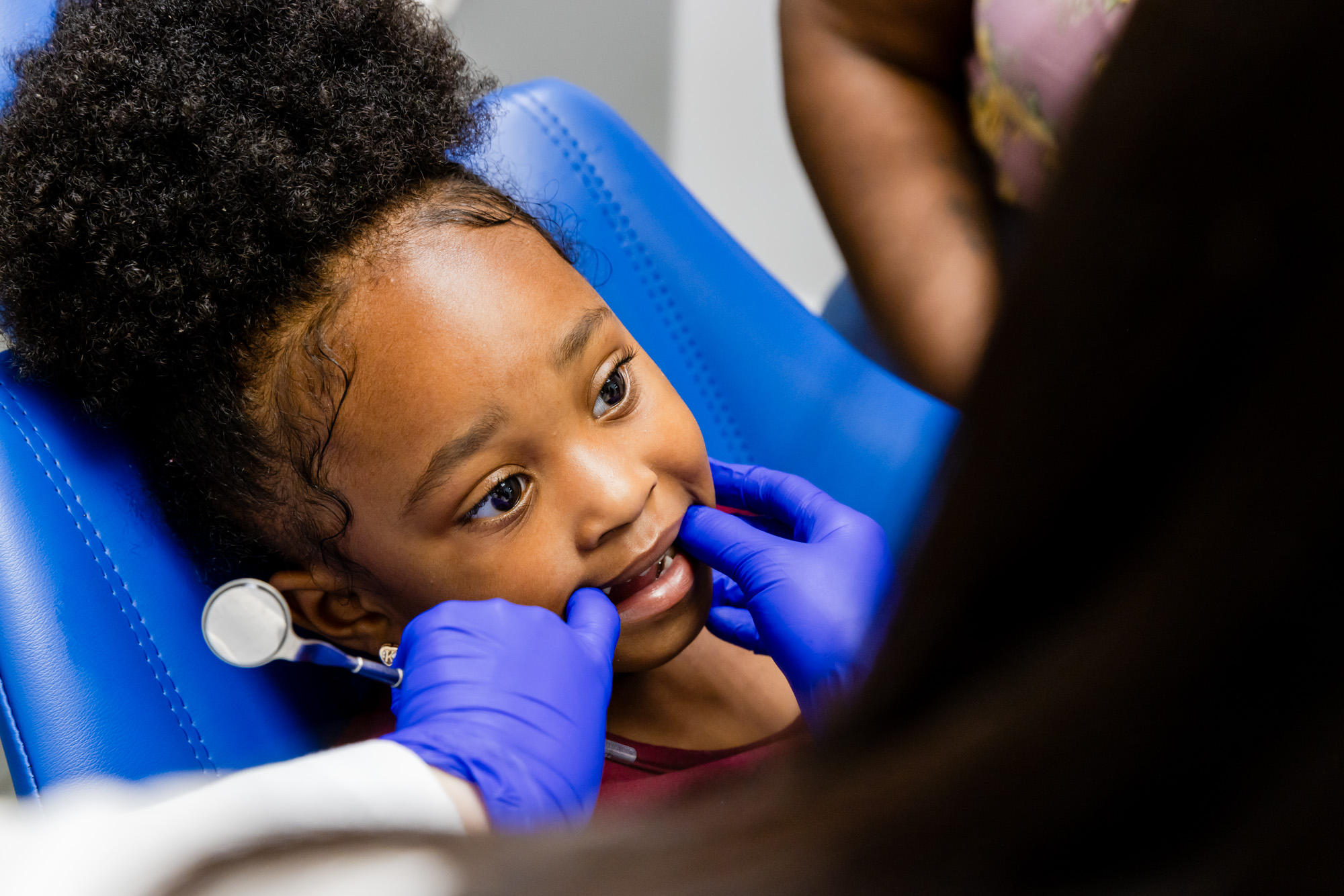While there’s no specific requirements, it’s good for your child to brush and floss before they come in to minimize the amount of cleaning we have to do. Other than that, you can prepare any concerns or questions you may have, and let the dentist know at their dental exam in Herndon if your child has been having any problems.
Dental Exams & X-Rays Overview
When your child gets a dental cleaning, we always conduct an initial oral exam to check for any areas of potential tooth decay, cavities, gum disease, or other conditions. If they’re due for an X-ray, we’ll then take them to receive an X-ray that captures their teeth and bone structure to give our pediatric dentists greater insight.
Addresses
Our dental exams and X-rays detect the following:
Tooth decay
Gum disease
Infection
Bone loss
Erupting teeth
Tooth and bite alignment
Cysts
How Getting an Oral Exam or an X-Ray Benefits Kids
Dental exams with a pediatric dentist in Herndon offer several key benefits for children. Our specialized dentists are trained to handle the unique dental needs of kids, providing tailored care that supports their developmental stages. Regular check-ups help in the early detection and treatment of dental issues, such as cavities, gum disease, or misaligned teeth, ensuring optimal oral health as children grow. The child-friendly environment and approach at Hero Pediatric Dentistry make dental visits less intimidating, promoting a positive attitude towards dental care in young patients. We aim to educate children and parents about effective oral hygiene practices during every exam, laying the foundation for a lifetime of healthy dental habits. Addressing dental concerns early in life can prevent more complex and costly treatments in the future, safeguarding the child’s overall well-being.

What to Expect
Dental exams and X-rays are completely painless. Your child’s pediatric dentist in Herndon, VA, will ask your child to open their mouth for an exam and will give them instructions like asking them to bite down, smile, etc. Depending on the type of X-ray, your child may go into a separate room before returning to the treatment area. We put a lead apron onto your child to protect them from excess radiation, and we guide them on each step of the X-ray procedure.

Why Even Our X-Rays Are X-ceptional
Fun & Kid-Friendly
All of our kids receive a toy for making it through their appointment, and they get an extra prize if they’re cavity-free!
Compassionate & Gentle
During our exams and X-rays, we take special care in making your kid feel comfortable throughout the process.
Expert & Educational
Our trained staff are experts in pediatric dentistry and educate you and your child on proper dental care.
Frequently Asked Questions About Kid-Friendly Dental Exams and X-Rays
There are many types of X-rays that scan different parts of the mouth. These might include:
- Bitewing X-rays: Bitewing X-rays image the crowns of the bottom and lower teeth in a certain area to show areas of decay.
- Periapical X-rays: This X-ray focuses on just one or two teeth to show the entirety from crown to root.
- Occlusal X-rays: Occlusal X-rays check the way teeth fit together when they bite down.
- Panoramic X-rays: A panoramic X-ray will provide a full image of your child’s entire mouth.
While dental X-rays do involve radiation, with advancements in X-ray technology, we use digital X-rays that emit much less radiation than before. The amount of radiation from a dental X-ray is comparable to the amount you receive from a smartphone or even from the sun. Regardless, we always prepare with safety precautions such as a leaded apron or a thyroid collar to make sure your child is as protected as possible.
The frequency of dental X-rays depends on their individual oral health needs and risk factors for dental problems. Generally, children may need X-rays more frequently than adults because their mouths grow and change rapidly, and they are more susceptible to tooth decay. A typical recommendation is to have X-rays taken once every one to two years, but your kid’s dentist may suggest a different schedule based on their specific dental health status and history.
Children should generally have dental exams every six months, though the exact frequency can vary based on individual oral health needs. Regular exams allow us to monitor the development of the child’s teeth and gums, detect early signs of decay, and address any emerging orthodontic concerns. These visits also provide an opportunity to reinforce good oral hygiene practices. Your child’s Herndon pediatric dentist might recommend more frequent visits if they have specific dental issues or higher risk factors for tooth decay.
Dental X-rays can reveal issues that visual exams alone cannot, such as cavities between teeth, impacted teeth, and the health of the tooth roots and jawbone. They are particularly valuable in tracking the development and positioning of permanent teeth beneath the gums in growing children. X-rays also help in identifying any bone diseases or hidden dental structures, including cysts or tumors. While not needed at every exam, they are essential tools for comprehensive dental assessment and treatment planning.
A typical dental exam for a child includes a thorough cleaning to remove plaque and tartar, a visual examination of teeth and gums, and an assessment of the child’s bite and jaw alignment. The dentist will check for cavities, signs of gum disease, and any other oral health issues. They may also apply fluoride treatments or dental sealants as preventive measures against decay. Additionally, the dentist will discuss the child’s dietary habits, oral hygiene practices, and any developmental issues that may impact oral health.

Be In the Know On Your Child’s Dental Health
With our dental exams in Herndon, we can develop effective and proper treatment for your kid.












